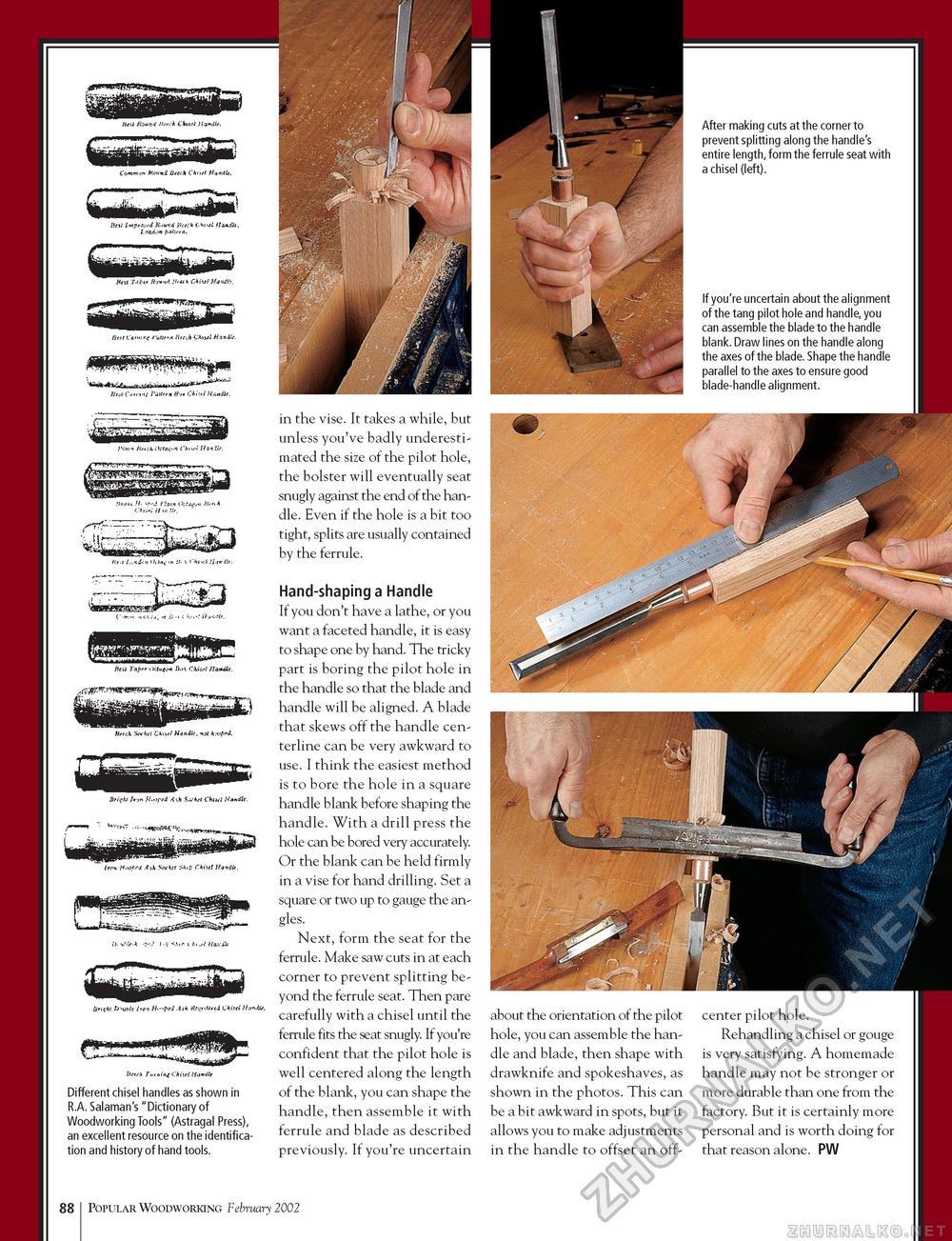Popular Woodworking 2002-02 № 126, страница 89
Different chisel handles as shown in R.A. Salaman's "Dictionary of Woodworking Tools" (Astragal Press), an excellent resource on the identification and history of hand tools. After making cuts at the corner to prevent splitting along the handle's entire length, form the ferrule seat with a chisel (left). If you're uncertain about the alignment of the tang pilot hole and handle, you can assemble the blade to the handle blank. Draw lines on the handle along the axes of the blade. Shape the handle parallel to the axes to ensure good blade-handle alignment. in the vise. It takes a while, but unless you've badly underestimated the size of the pilot hole, the bolster will eventually seat snugly against the end of the handle. Even if the hole is a bit too tight, splits are usually contained by the ferrule. Hand-shaping a Handle If you don't have a lathe, or you want a f aceted handle, it is easy to shape one by hand. The tricky part is boring the pilot hole in the handle so that the blade and handle will be aligned. A blade that skews off the handle cen-terline can be very awkward to use. I think the easiest method is to bore the hole in a square handle blank before shaping the handle. With a drill press the hole can be bored very accurately. Or the blank can be held f irmly in a vise for hand drilling. Set a square or two up to gauge the angles. Next, form the seat for the f errule. Make saw cuts in at each corner to prevent splitting beyond the ferrule seat. Then pare carefully with a chisel until the f errule fits the seat snugly. If you're confident that the pilot hole is well centered along the length of the blank, you can shape the handle, then assemble it with ferrule and blade as described previously. If you're uncertain about the orientation of the pilot hole, you can assemble the handle and blade, then shape with drawknife and spokeshaves, as shown in the photos. This can be a bit awkward in spots, but it allows you to make adjustments in the handle to offset an off- 88 Popular Woodworking February 2002 |








